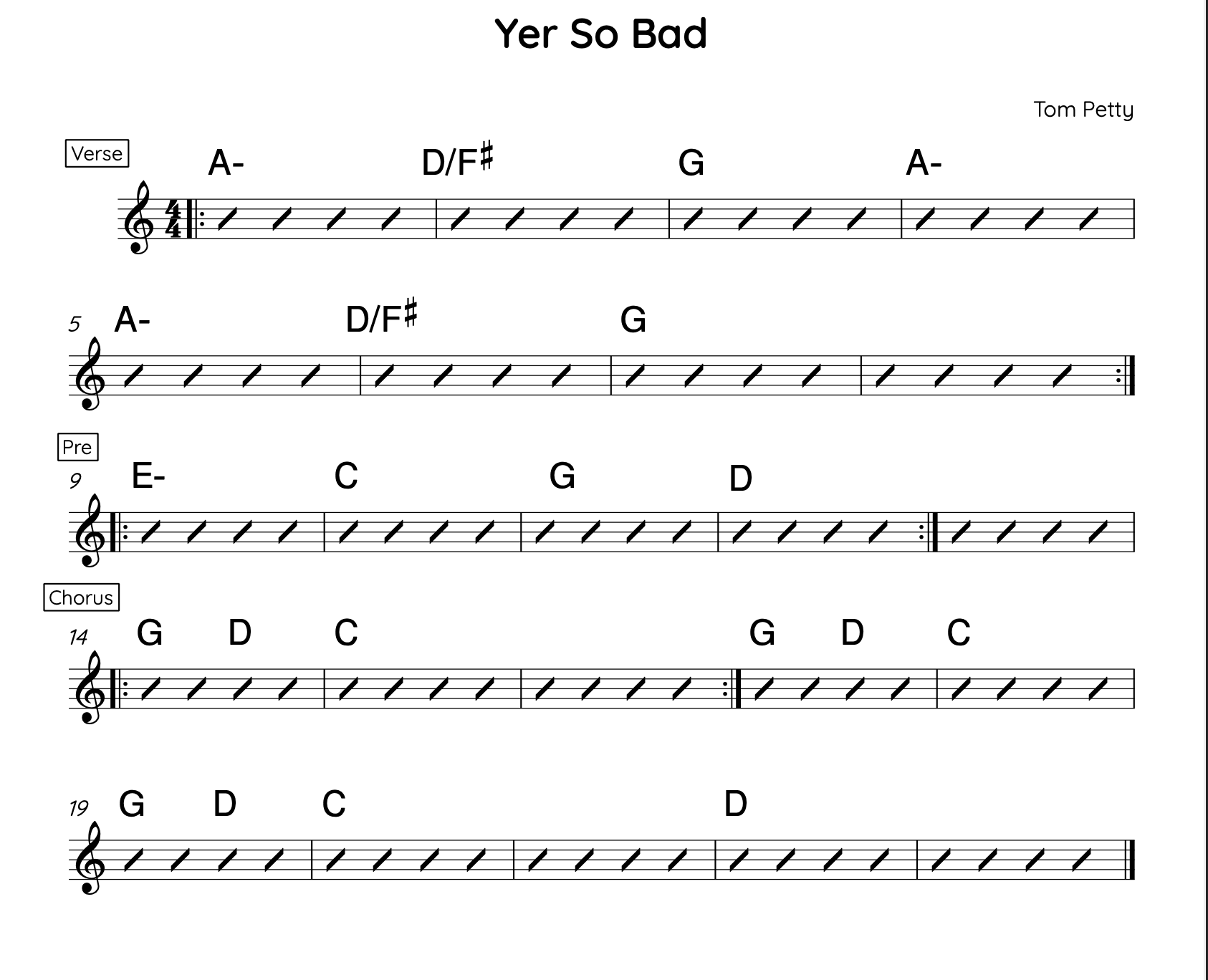Tom Petty Yer So Bad
In Episode 10 of the Anatomy of Tone podcast, I delved into Tom Petty's song "Yer So Bad" from his album Full Moon Fever. In the podcast, I love pinpointing standout moments in songs - not only to discuss songwriting and composition craft but also to share how I research music to build my own library of creative ideas.
The chorus section of "Yer So Bad" caught my attention due to its unique structure of measures, setting it apart from other songs. Tom Petty was a master of songwriting and took his craft seriously.
In the realm of music, we often encounter phrases with an even number of bar counts. Typically, phrases are built upon two to four-bar sentences. While this isn't a strict rule, it's a common approach to musical phrasing.
Tom Petty decided to deviate from the norm in the chorus of "Yer So Bad," and this choice stood out. There are various ways to create tension in music, and while pitches and harmony are commonly used for that purpose, we can also employ rhyme and phrase lengths to build anticipation.
In the chorus, Tom Petty utilized traditional functional harmony, progressing through the I-IV-V chords, which contrasted nicely with the odd phrase length.
The chorus begins with a three-bar phrase, followed by a repetition of the same three-bar pattern - a common move in music. But then, on the third repetition, Tom breaks the pattern, using a two-bar phrase instead, providing temporary relief from the uneasy feeling.
However, he quickly returns to a three-bar phrase, resuming the tension. To finish the chorus, Tom lands on a V chord, which feels like a resolution but still creates tension by extending it for an additional bar.
So, if we analyze the chorus, it follows this structure:
Three-bar phrase
Three-bar phrase (repeat of phrase 1)
Two-bar phrase
Three-bar phrase
Two-bar phrase
Let’s look at the chart for more clarity:
As songwriters, we can apply this technique in our own work. Try incorporating this form with varying bar counts into your chord progressions. Eventually, you can experiment further by using different bar lengths than the combination of three and two.
For now, focus on getting acquainted with this form and use it as a creative tool to enrich your songwriting. It might lead you to exciting new possibilities!
I hope you find this useful for you songwriter/composer toolbox. If you’re inserted in private songwriting/composition lessons reach out to discuss.



